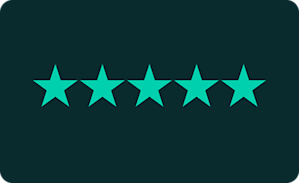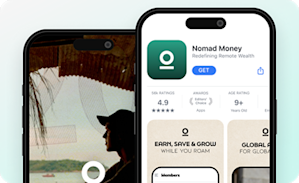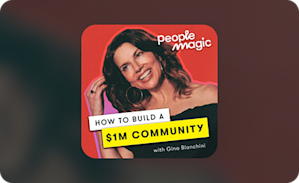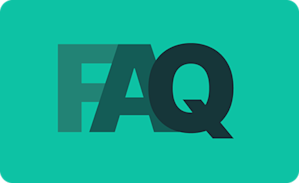Communities & Memberships
The 9 Best Subscription Platforms for Creators (2025)
We identify the best subscription platform for every type of creator.
Author
Mighty Team
Last Updated
August 22, 2025

The subscription economy is set to reach $1.5 trillion in value by 2025. And while a lot of this revenue comes from global brands, subscriptions will continue to drive the creator economy too. Goldman Sachs projects the creator economy alone will be $500 billion by 2027, and our research found that around 38% of paid creators use subscriptions to monetize.
Subscriptions create reliable, recurring revenue that can help creators focus on their work. And many creators are successfully monetizing thanks to subscription platforms that make it possible.
In this article, we’ll introduce you to the best subscription platforms for creators. We’ll cover:
What a subscription platform is.
The types of subscription businesses creators can start.
The 9 best subscription platforms for creators.
Try the platform with the most $1 million communities.
Top subscription platform for creators by content type:
Designed For | Best Features | Pricing | |
|---|---|---|---|
Course Creators & Community Builders | All-in-One Course and Community Platform, Member Management, Live/Pre-recorded Courses, Livestreaming, Virtual Events, AI-powered Member Introductions | From $49/mo | |
Newsletter Writers | List Management, Landing Pages, Email Automation, Subscriber Segmentation | Free plan + 3.5% + $0.30/transaction | |
Newsletter Writers | Platform Discoverability, Multi-media Content Support, Subscription Tiers | 10% of earnings | |
Podcast Creators | Professional Podcast Website, Recording Tools, AI Transcription, Multi-platform Publishing | From $9/mo | |
Musicians | Music Hosting, Vinyl Pressing, Merchandise Sales, Event Hosting | From $10/mo | |
Async Course Creators | Asynchronous Course Builder, Marketing Funnels, Basic Email Platform | From $149/mo | |
Course Creators | Course Marketplace, Large Learner Base, Flexible Pricing Options | 63% platform fee (marketplace), 3% (direct) | |
Physical Product Creators | E-commerce Tools, Marketing Features, Business App Integrations | From $51/mo | |
Content Creators | Tiered Subscriptions, Merchandise Integration, Fan Messaging | 5-12% of earnings |
What is a subscription platform?
A subscription platform is software that lets creators build, host, and sell digital products and services for recurring revenue. The right software should give the creator most or all of the tools they need to run a digital subscription business easily; this could include features like landing pages, member management, point of sale, or apps.
Unlike social media monetization which primarily gives creators a portion of ad revenue, subscription platforms let creators collect revenue directly from fans. This usually results in better earnings and more control over your business.
In this list, we’ll focus on subscription platforms that are easy to get started with and can monetize quickly, giving you space to do your creative work without stressing about software.
How subscription platforms work: Subscription platforms are pre-built software solutions that let you create and sell access to content, products, or memberships. Most subscription platforms have two key parts: 1. The option to host and deliver your thing (e.g. a podcast, a course, a newsletter), 2. The payment infrastructure to earn income from subscribers.
These shifts are subtle but powerful. They mean more control over your branding and business and better earnings.
Who should use a subscription platform?
Subscription platforms are great for creators who want to build a real, sustainable digital business. Many creators start on social media without realizing the harsh reality: 99.9% of creators aren’t earning enough from platform monetization alone. For example, YouTube Adsense pays about $2.95 per 1,000 views. Most creators need massive numbers to even come close to earning a living.
Subscription platforms are a better option. They take monetization straight to the person consuming the content, offering more value of some kind. It could be a premium newsletter, a course, or a community, but a subscription platform lets you earn more from your superfans–who become super-members!
As a bonus, using a subscription platform can create recurring revenue, give creators control over their brand, and set them free from the whims of algorithms
Types of subscription businesses for creators
This isn’t an exhaustive list of every subscription business. But these are some of the most common for creators plus a brief description of what each entails.
Memberships and communities: access to a space in which members meet others and grow friendships–often while going through a transformational journey.
Digital publications: access to original content from content creators on an ongoing basis (e.g. a newsletter or premium blog posts).
Streaming services: access to media on demand (podcasts, shows, etc.).
Premium apps: access to content, learning, experience, etc., on a branded app.
Coaching or masterminds: access to regular sessions with either a coach or facilitator to learn and grow.
Physical product subscriptions: regular delivery of a subscription box or product.
Software-as-a-service (SaaS) subscriptions: Subscribers pay for access to software (e.g. bookkeeping software, an e-commerce platform).
Patronage: supporters can choose a set amount to give regularly to support your work.
In this article, we’ll cover examples of subscription platforms from most of these.
Must have features of the top subscription platforms
Each subscription platform is different. They have different markets. Different use cases. Different Ideal creators. So they will be different in the details.
But here are a few common things you need:
Best-in-class creation options: Whatever your creative output, the platform needs to let you do it well, or even do things you can’t do on social media (e.g. courses, events.)
Monetization tools: A good subscription platform should let you charge for access, ideally in different formats, currencies, bundles, etc.
Access control: Creating a digital subscription nearly always requires paywalling access.
Branding tools: You get to build your own brand. Consider what each platform gives you to customize.
AI Features: It’s the big word right now, but it’s important. Lots of subscription platforms use AI to make it easier to run and grow your digital business.
Analytics: You need to be able to see what’s working and what isn’t.
Apps: Often subscription platforms should be available on mobile–lots of people don’t even have desktop computers anymore.
Top 9 subscription platforms for creators
1. Mighty Networks
Best for courses and communities
For subscriptions made up of communities, memberships, or courses, Mighty Networks is the place to build. Ranked as G2’s #1 community management software, Mighty is home to more $1 million communities than any other subscription platform.
And Mighty hosts the memberships for some of the world’s top creators and brands, like Tony Robbins, TED, Mel Robbins, Marie Forleo, Jim Kwik, and Matthew Hussey.
The reason Mighty works great for both courses and communities is that the software is built with flexible Spaces to let the creator add the types of membership features they want. This can include live and pre-recorded courses, virtual events, livestreams, community discussions, resource pages, and/or premium content.
This gives creators awesome flexibility when creating subscription experiences.
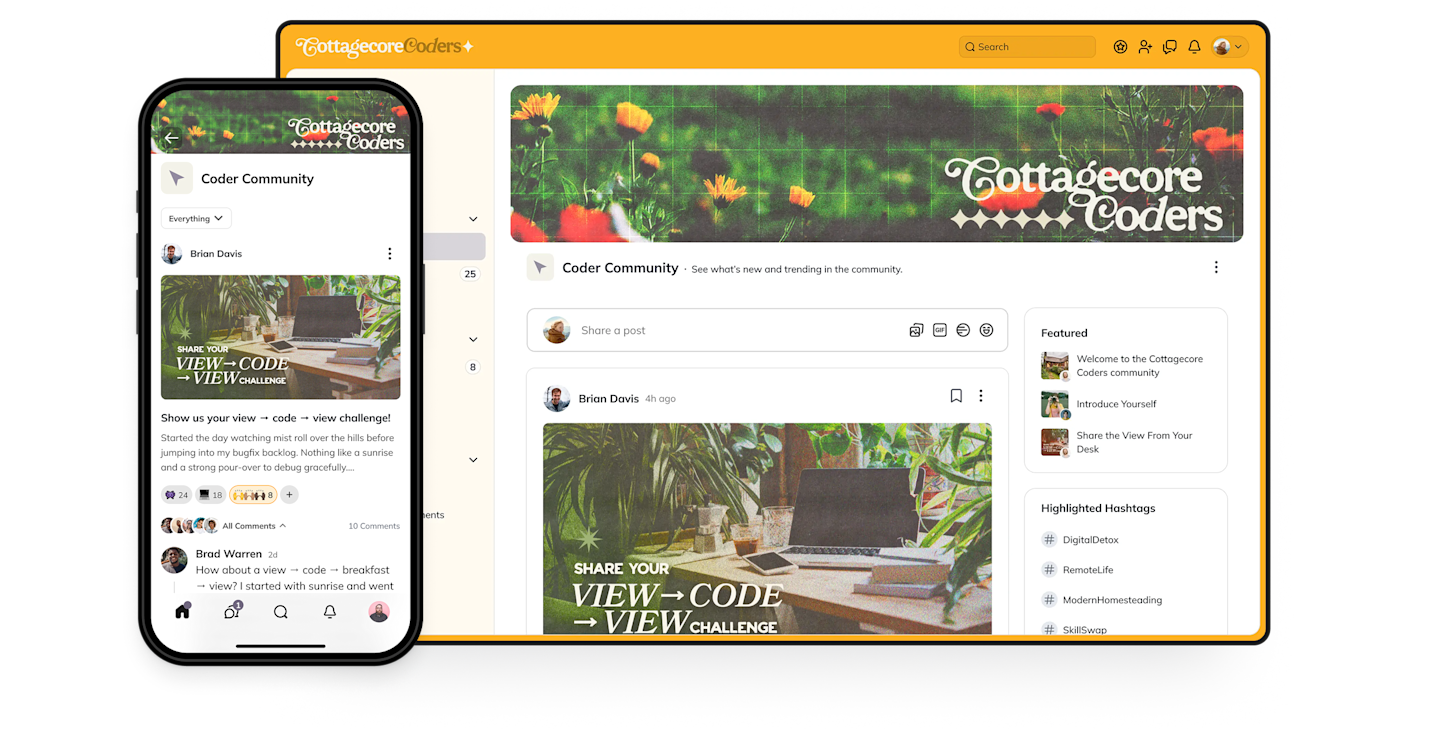
For memberships and community, Mighty is the only software that’s designed to introduce members to each other. This is called people magic, and it skyrockets member engagement.
Your members can browse members near them, or explore members by interest. And AI features can make the introductions: showing them similarities and starting a conversation. Mighty has AI member profile building and customizable new-member welcome sequences built-in, AI features that get people engaged quickly.
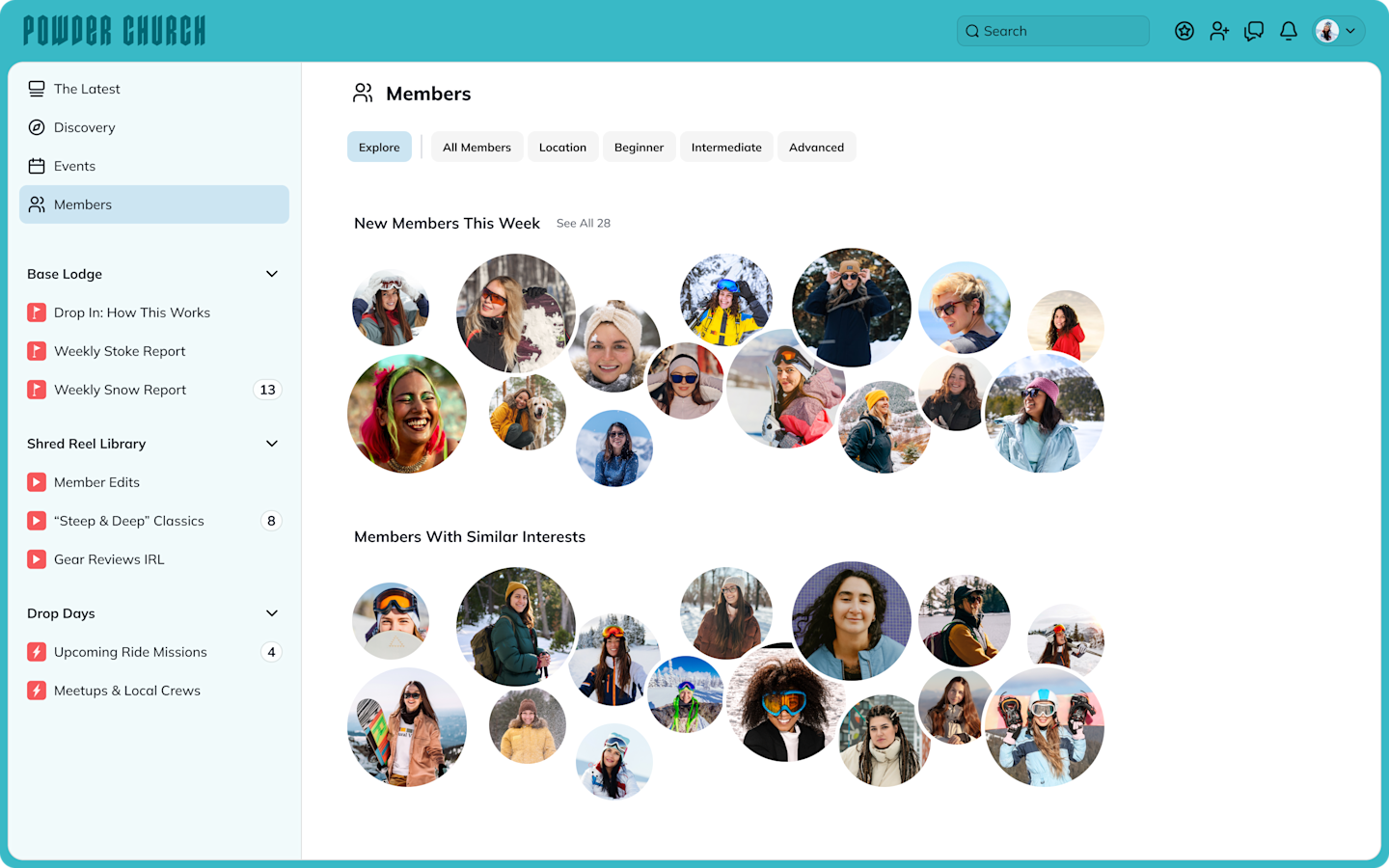
Courses are awesome with Mighty’s features too. You can deliver them in different ways:
Pre-record an asynchronous course and let it run as passive income for a community.
Pre-sell a live course and teach to an audience.
Sell the recording of a live course after the fact.
Creators on Mighty find that these tools give them the flexibility to teach on their terms and meet their audience where they’re at. And if you want to mix course and community, you can charge for memberships and upsell into courses.
Mighty gives you everything you need to run a creator business with actionable insights and member management tools. And you can sell individual memberships, coaching, masterminds, courses, or events, OR bundle any or all of these together. You can sell your subscriptions in 135 different currencies.
Mighty comes with an awesome app for Android and Apple, but established creators can also get a premium branded app.
And you can try Mighty free for 14 days–no credit card required.
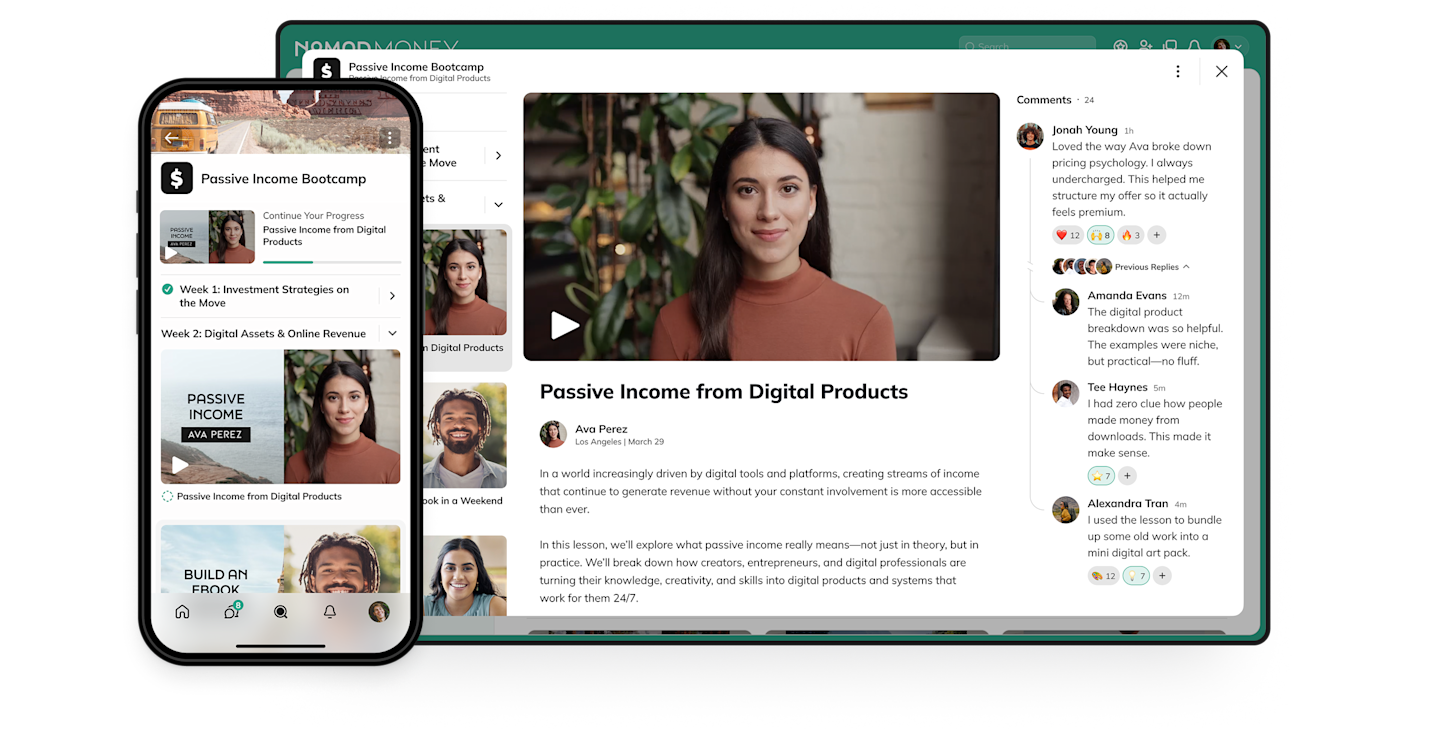
Best features
All-in-one course and community platform with flexible Spaces for delivering awesome experiences to your members
Features like live & pre-recorded courses, livestreams, virtual events, chat & messaging, and discussion forums
Software designed to introduce members to each other, with auto-profiles, similarities, conversation starters, text improvements, auto-discussion questions, and instant course outlines
Great apps for every device or your own branded apps
2. Kit
Best for subscription newsletters

Newsletters are having a moment, and rightly so. For people who love to write, a newsletter can deliver a subscription income in exchange for your ideas. And newsletters have empowered a lot of traditional journalists and thought leaders who struggled to monetize their ideas elsewhere.
Kit is one of the best places to build your own newsletter. It’s an email powerhouse that gives you tools to build landing pages and opt-ins, collecting emails and growing your email list. Kit has better subscriber management than you’ll find on any other newsletter platform, with easy-to-use tags and audience segmentation.
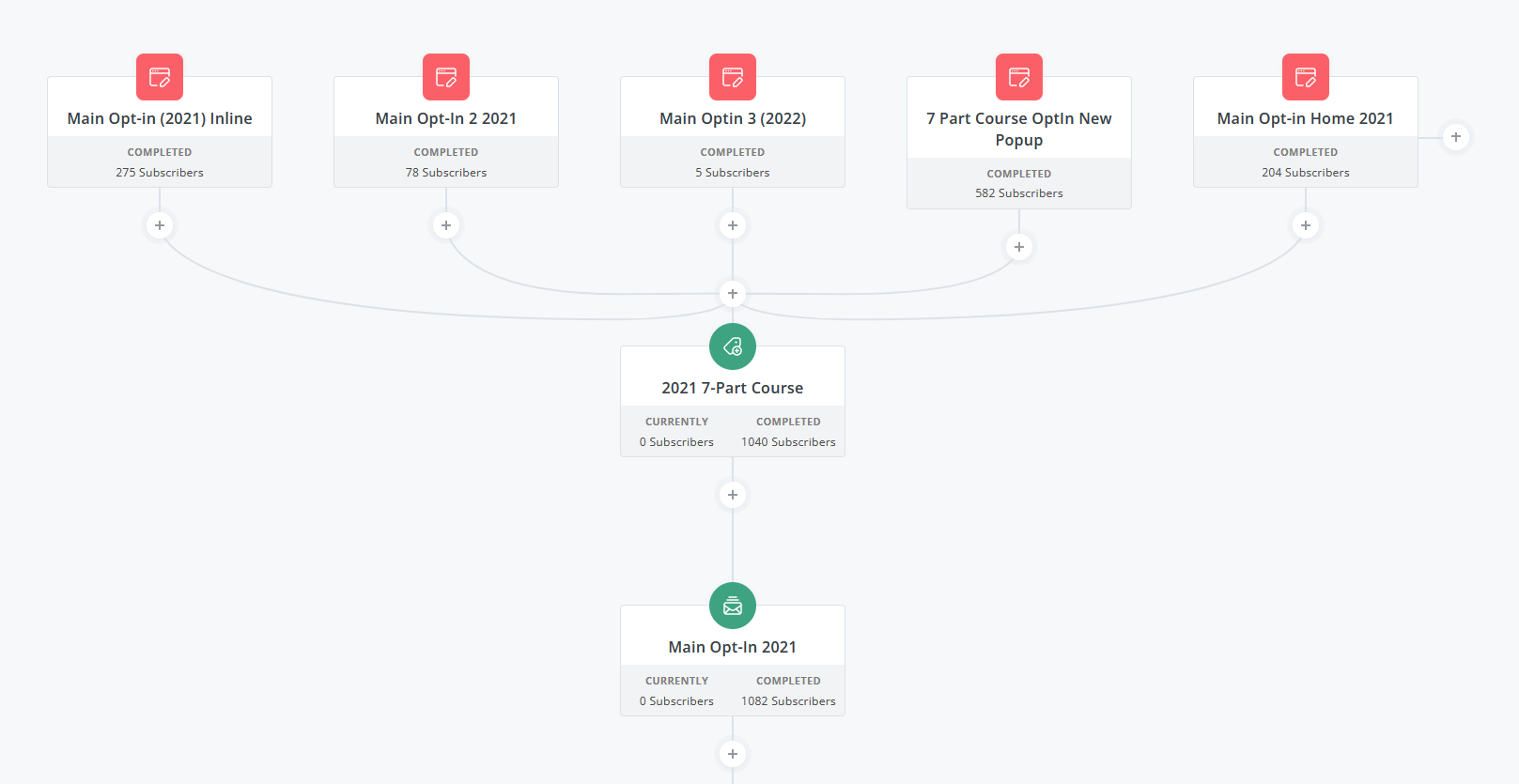
You can send live broadcasts, but you can also build visual sequences and automations to send subscribers through a set email journey. Kit has templates for building great newsletters and design features for customizing and making it your own. And, once you send emails out, you can see the analytics from each blast.
Kit offers hosted newsletters, and they’ve been adding tools to help creators grow their readership like the Creator Network and follow suggestions.
Best features
Tools for growing and managing a list: landing pages, opt-ins, segmentations, and tags
Email design tools, hosting, and discovery through the Creator Network
Send live broadcasts or else create visual automations and sequences for auto-sending with awesome analytics
3. Substack
Best alternative for newsletters
Substack was one of the first email newsletter platforms, and it definitely deserves a place on this list. Substack’s strength is its discoverability, with around 20 million subscribers to its newsletters. The homepage works well for those looking for great newsletters, featuring Substack creators. And once you’re logged in with an account it prompts you to follow relevant creators and interests.
Substack is mixing in some traditional social media features too, with a notes feature that feels a bit like X or Threads. This helps you create quick, short-form content to find more readers. And there’s a chat feature that basically organizes a giant chat for people following a specific newsletter (although to be honest, this feature feels unnecessary).
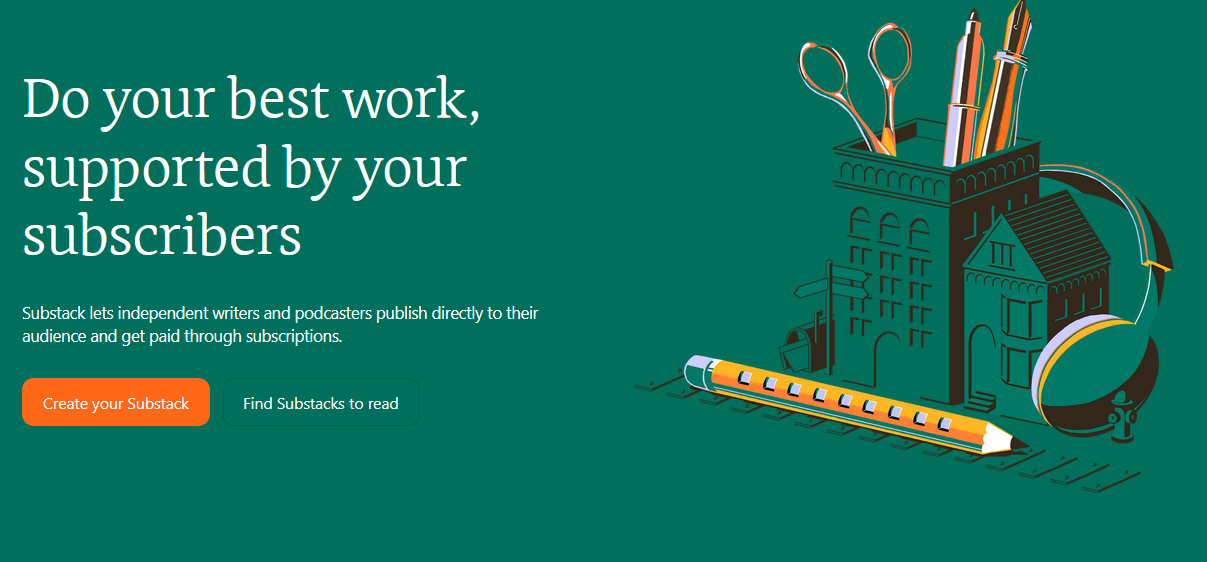
As far as content goes, creators can write articles and share them with subscribers, and the newsletter lives on Substack. In addition to text, creators can build podcasts, video, or audio.
Substack monetizes with built-in tools that can create different subscription tiers with benefits for each one. However, Substack takes a 10% cut of everything you earn. This makes it an expensive option for creators, while Kit’s newsletter platform is a flat fee (plus 3.5% + $.30 on the free plan).
Best features
Discoverability and hosting on Substack’s main page
Creators can help each other grow with suggesting followers
Create different kinds of content, long-form, short posts, podcasts, audio, and video
Build subscription tiers
4. PodBean
Best for podcast creators

If you’re an aspiring podcaster, then PodBean is worth a look. It’s a great blend of podcast creation and monetization tools, meaning it can handle pretty much all of a podcast business. PodBean gives you a professional podcasting website, with unlimited audio and video hosting and a cover art generator.
The recording workstation is solid, with AI tools like noise reduction, EQ, and auto-filtering. You can even automatically cut filler words (“um”), and generate AI transcripts of your podcasts. And once a podcast is done, you can instantly publish from PodBean to Spotify, Alexa, and Apple.
Best of all, PodBean integrates monetization with a flexible approach that can match how you want to earn, whether you take advantage of advertising or subscriptions.
Best features
Recording platform with tools to give every creator a professional-sounding podcast
Hosted website and instant publishing across Spotify and Apple
Different monetization methods like ads and subscriptions
5. Bandcamp
Best for musicians
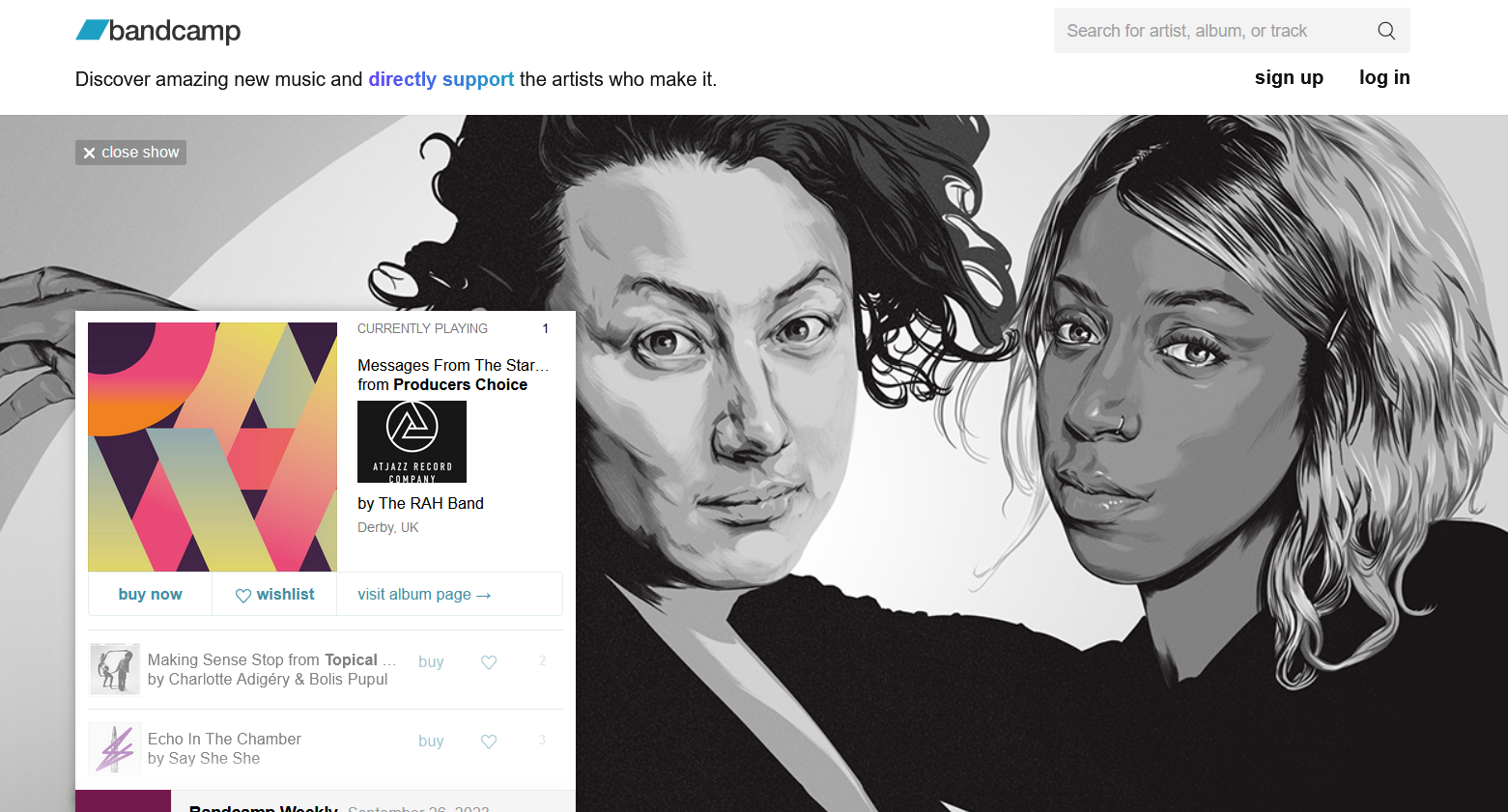
If your creative skill is music, you should give Bandcamp a look. Bandcamp has been around since 2007, but as other music platforms took agency from creators, Bandcamp has evolved to support independent musicians–especially with subscriptions. Bandcamp paid $193 million to artists last year.
Bandcamp lets you bring fans to your music and get discovered by new listeners in the library. It hosts music, but the player is also embeddable in other websites. Bandcamp also has some community features for messaging and email.
When it comes to monetization, Bandcamp is doing a lot of things right. This includes starting a subscription so that fans can support your music. But Bandcamp also presses vinyl, so fans can order a physical copy of your music. And you can host paid live events and sell merch straight from Bandcamp.
It’s a platform that’s thoughtfully designed to help musicians earn a living, and it’s a great subscription platform for those creating music.
Best features
Musician website with embeddable music player
Community and discoverability features
Creative monetization options for artists from subscriptions to pressing vinyl to merch to events.
6. Kajabi
Asynchronous course alternative
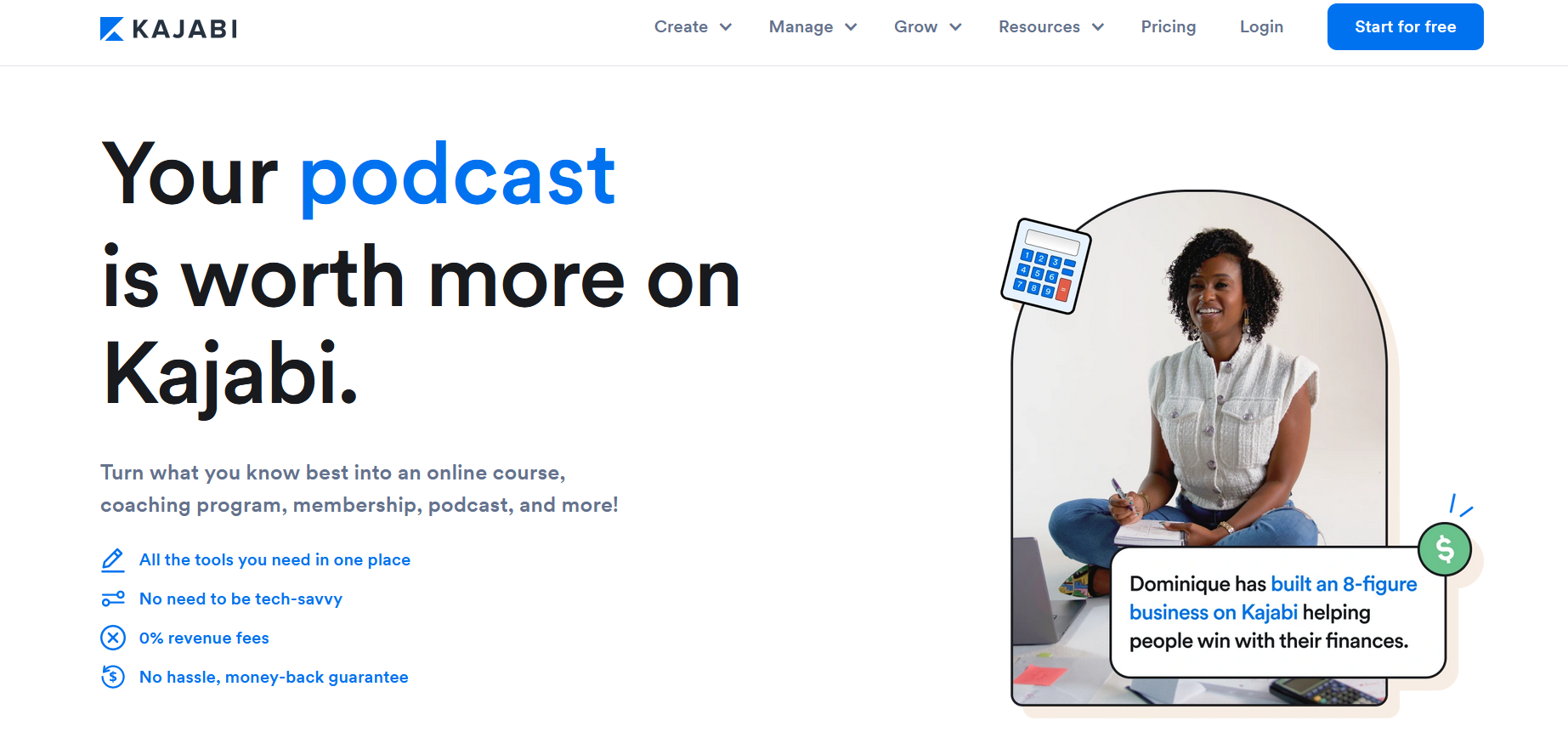
For those with something to teach, Kajabi is an alternative asynchronous course builder. You can create courses with video and text, aligning modules to an LMS. Kajabi can drip content and build preset programs, making it a good fit for course-based subscriptions.
Kajabi can be used to build and customize a course website, with templates to build from and flexible designs. It allows for different types of pages (e.g. Home, About, Resources) that can take the place of a traditional website.
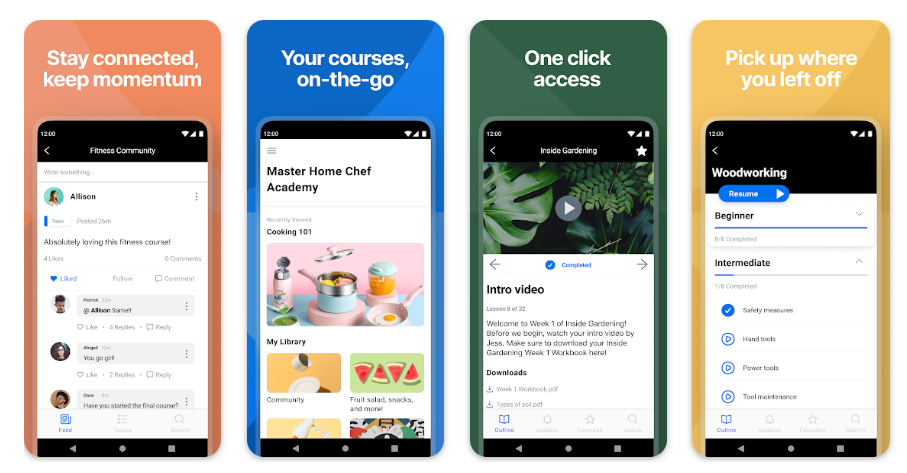
And Kajabi has built-in marketing funnels to help sell courses. This is Kajabi’s best feature, pre-made funnels for different purposes that automate sales processes. It also has a basic email platform built-in too, making nurturing and selling happen in the same place.
These tools make Kajabi a great choice for a pre-recorded online course. But Kajabi has a few knocks against it for live courses, memberships, and communities. Kajabi’s community feature was just a clunky forum, and they acquired a platform called Vibely to fix this. The result is Kajabi 2.0 which is on a separate platform and a separate app. If you wanted to run a course and community together, your audience would need 2 different apps.
These make Kajabi great for asynchronous courses, but not so much for other types of learning and membership, especially when there are better all-in-one platforms available.
Best features
Solid asynchronous course platform with LMS
Good marketing funnels and integrated basic email
7. Udemy
Good course marketplace
For course creators looking for a course marketplace, Udemy is a good choice. It has 64 million learners on the platform and thousands of courses. And building a pre-recorded course on Udemy is easy.
For those who don’t know, a course marketplace means you add your online course to a library of courses from other creators, and people browsing can find it. Marketplaces do usually work on a subscription, but often it’s a subscription to the platform itself (not to your specific course). For example, a Skillshare membership includes most of the courses on Skillshare.
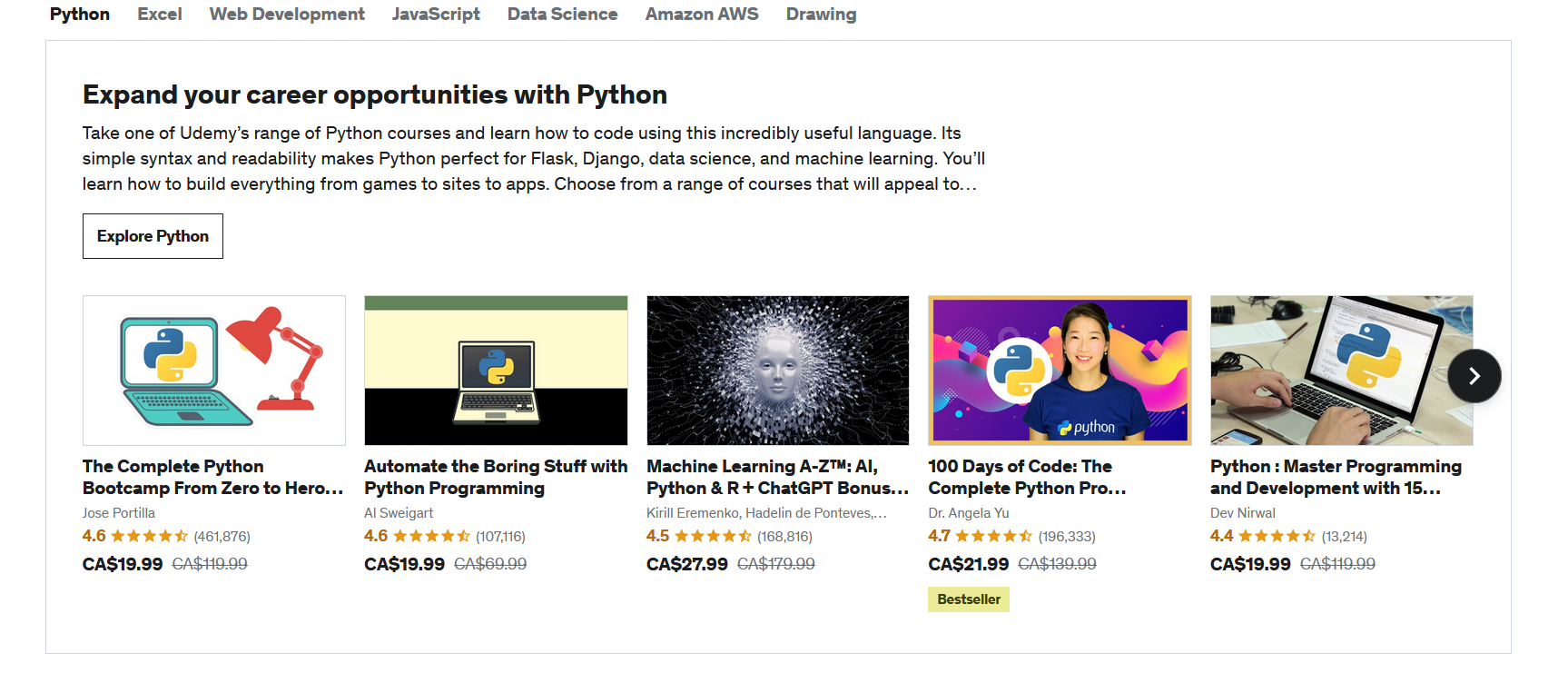
The reason Udemy is a better choice than Skillshare for a marketplace platform is because of its payout model. It lets creators set up their own courses or subscription packages, as well as setting your own prices (from free to $299). But Udemy also has a subscription-based plan (like Skillshare) for business–if your course is included in this plan, you get a payout depending on the time students spend watching your course.
Unfortunately, Udemy keeps 63% of revenue generated from students who find your course from their platform. Some creators are okay with this, especially if it gives you students you wouldn’t otherwise have. But for students you bring to the platform (e.g. through a dedicated link), you keep 97% of revenue.
Remember, putting your course on a course marketplace means you don’t build your business or your list, you’re building Udemy’s business.
Best features
Course marketplace with one of the best payout models
Easy-to-use course creator and subscriptions
8. Shopify
Best for selling physical ecommerce subscriptions
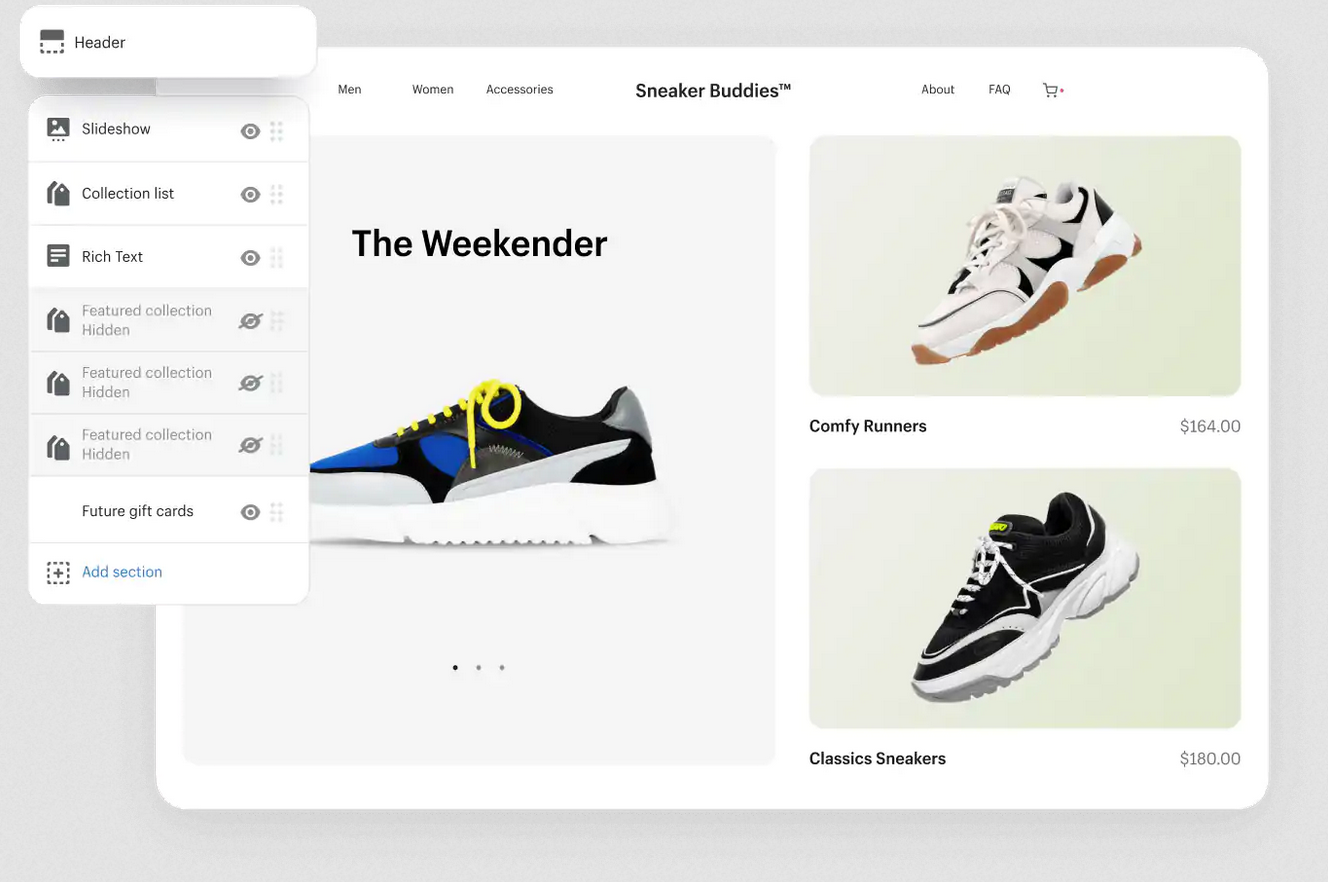
Shopify is pretty much the ultimate e-commerce solution, so where does it fit on a list of subscription platforms for creators?
The answer is, subscription boxes!
If you’re creating something physical that needs to be shipped, Shopify is a really good merchant platform to start with. You can create a hosted store or add a shop to your own website. The sites are easy to build with lots of templates to choose from, and they integrate perfectly with the point of sale parts of Shopify. It’s easy to add product descriptions, images, and everything your customers need to see what they’re buying.

Best features
Easy to build pages with templates and integrated shops.
Solid marketing features like cart recovery, gift cards, and discount codes.
Lots of integrations with Shopify-friendly business apps.

9. Patreon
Finally, there’s Patreon. Unlike subscription platforms tied to a specific deliverable, Patreon can be great for collecting open-ended support. With Patreon, you can create tiered support levels for patrons to subscribe. But you can also offer gifts and benefits for different levels of supporters.
Patreon includes a hosted creator page and some built-in communication tools for reaching your subscribers. Subscribers can manage their memberships in one dashboard, and can receive messages and join chats from their favorite creators.

Patreon has a merch feature for subscriptions that also lets you sell goodies. It’s a great subscription platform for creators.
The downside to Patreon is that it takes a large fee from the money you earn–anywhere from 5-12%.
Best features
Multi-tiered subscription platform for patrons.
Integrate merch and messaging.
Fans can follow and support multiple creators at once.
Subscription success stories
Slow AF Run Club is a community for “back of the pack runners” led by Martinus Evans.
Marie Forleo runs her courses and coaching business on a premium community app.
“Project Fear” was cancelled by a network, and they took it to YouTube and funded it with a community.
Amanda Northcutt runs Level Up Creators for those who struggle to break into the tech C-Suite.
Ashley Fox left her Wall-Street job and eventually launched the Wealth Builder’s Community to teach financial empowerment to the other 99%.
Conclusion
If you’re ready to launch your first membership, community, or course, come launch with Mighty! Mighty is the ultimate subscription platform that gives you the flexibility to quickly and easily build any type of subscription you want. And you can try it free for 14 days, no credit card required.
Frequently Asked Questions
1. How can I choose the right platform for my content?
There’s no one right answer for choosing a platform, of course. Different platforms have unique benefits. But here are the main questions you should keep in mind.
What is the platform designed to do? This seems like a no-brainer, but there are still a lot of people using platforms to do things they weren’t designed to do. Slack is not designed to run memberships. Patreon is not designed to sell music. Using the platform for what it was intended will save you headaches.
How much ownership do you have? It’s getting harder and harder to own your own work. Social platforms make you give up control. And so do a lot of other monetized platforms. For example, if you’re teaching a course on Udemy, you need to understand that you don’t own anything. These are not your ��“customers” –they belong to Udemy.
How does it make money? If you don’t want to make money, you may not care that some platforms charge 10% of your revenue to use them. But if you are thinking business, it might bother you that for every $1,000 you make, some platforms will take $100. Or maybe you don’t care. But at least be intentional about it.
How can you grow? Starting a free membership on Facebook Groups is easy. But if you go to all the work to grow it, and decide you want to do more, you might find yourself trying to drag your members to another platform. That’s annoying. Choose a platform that lets you do what you need to do without moving. (But no worries, if you’re already on Facebook Groups or a subscription site and want to move to Mighty Networks, check out our quick-start community migration guide to make the switch seamless.)
2. How can I monetize my content with subscription platforms?
A few strategies things to think about
Tiered content:
One approach some creators use is to blend free and premium content. Here’s what this could look like:
A free option to get members interested. Ie. You probably have the option for people to read your newsletter for free.
A premium option. As people become more invested in the work you’re doing, people will want to pay. Maybe they believe in what you’re doing. Or maybe they want to get closer to the action with premium content.
A VIP option. A small number of your “true fans” might pay a premium for a lot of access to you and your ideas (e.g. a mastermind or coaching).
Tiered content is something a lot of creators do. But here’s something to think about. Many of the communities on Mighty Networks are thriving without a free tier. In fact, our data shows that when pricing a membership site, the most profitable networks with the lowest churn have no free tier at all.
Value-based pricing
Pricing doesn’t need to be a race to the bottom. People value what they pay for. And people pay for what they value. Price your subscription according to its value. For example, if you have a newsletter with premium industry opportunities that can earn your subscribers tens of thousands of dollars, don’t charge $5/mo.
Give existing members more
Community hosts often want to attract new members to grow their business. But often it’s the existing members that have the more potential. These people are already “in”, and are often looking for more ways to engage. Consider offering upsells to your existing subscriptions to increase revenue rather than pushing to get more subscribers or members.
3. How do I balance my subscriptions with building an audience?
It’s the age-old struggle for those creating subscriptions. How do you balance growing an audience and getting in front of new people with serving benefits to your subscribers?
Consider this.
Subscriptions and memberships can grow themselves. You might need a way to attract your first members. And yeah, maybe that’s social media or advertising. But great subscriptions and memberships have a flywheel effect–they grow by themselves as members talk about how great it is.
As you have your first base of members, focus on giving them incredible experiences they can’t find anywhere else. Don’t forget about the members you have while you’re chasing new ones.
4. Should I integrate subscription platforms with other tools?
There are two things to remember about integrations.
Integrations may be necessary. There are virtually no software options out there that do everything. Or–if they do claim to do everything–they probably don’t do it all well. So do pay attention to how specific subscription platforms give you integration tools and ways to connect.
BUT you shouldn’t have to integrate to get basic features. When you need to add 5 integrations to run a membership with your WordPress, you’re really just using WordPress for something it wasn’t designed to do. And this is a headache. Find a platform that’s built for your actual purpose.
Use integrations to augment your core subscription software. Don’t rely on integrations to build a core subscription software.
5. How can I market a subscription on a platform?
You’ll need to find the right way to bring your subscription platform to your audience. Here are a few common ones:
Some creators keep creating on a social media platform, using that content as a “funnel” to direct their super-members into a premium offer.
Some subscriptions can generate their own flywheel effect. For example, great memberships can grow through word of mouth!
Some people with an existing email list market to that.
Some creators run ads, either to grow their list or direct to subscription.
Some platforms help with growth. For example, Kit has a feature that lets paid newsletter creators recommend each other.
6. How can I grow my subscriber base?
We touched on a few options above. But here are some specific ideas!
If you’re active on social media, tell people about your subscription! Make posts. Work it into video descriptions. Make it your link in bio.
Grow your email list. Always. Don’t trust your social media following. Find a way to own your connection with your followers. You can grow that list with opt-ins, giveaways or downloads, or just asking people.
Partner with other creators to work together, deliver content, interview each other, etc. Getting in front of others’ existing audiences is a great way to grow.
Make sure you’re providing value to your Ideal Member and keeping your subscribers. High churn can kill a subscription business just as much as nobody buying.
Keep going! It takes time to grow a subscription.
7. Why do some content creators prefer subscription-based platforms over social media?
Subscription-based platforms give creators the freedom to control their own output and audience, and to earn what they’re worth. While most people clamor to reach tens of thousands of subscribers on social (and few do), a lot of thriving digital businesses are built with subscriptions of anywhere from 20-10,000 people.
You don’t need huge numbers to earn well: A dedicated community of members charging $40/mo can out-earn millions of subscribers.
You actually own the relationship: On social platforms, you don’t have any control over your subscribers or what gets seen. Subscription platforms offer this.
You don’t fight the algorithm: Even top content creators don’t control what gets seen. Small algorithm changes can dramatically change your bottom line.
8. Which subscription platforms charge a flat monthly fee versus taking a % of my revenue?
Try Mighty Networks! You can build courses, communities, and events under your own brand and the platform cost doesn’t grow as you do. You can check out pricing info here.
9. Which subscription platform offers a white-label mobile app?
Mighty Networks offers a completely branded mobile app for getting your courses, community, memberships, events, etc. under YOUR brand in the App Store and Google Play Store. You can learn more here.
Ready to start building your community?
Start a free 14-day trial to explore Mighty—no credit card required.
More like this
Join Mighty Community
Learn the principles of Community Design™ (and see them in action) alongside thousands of creators and entrepreneurs. It's free to join!
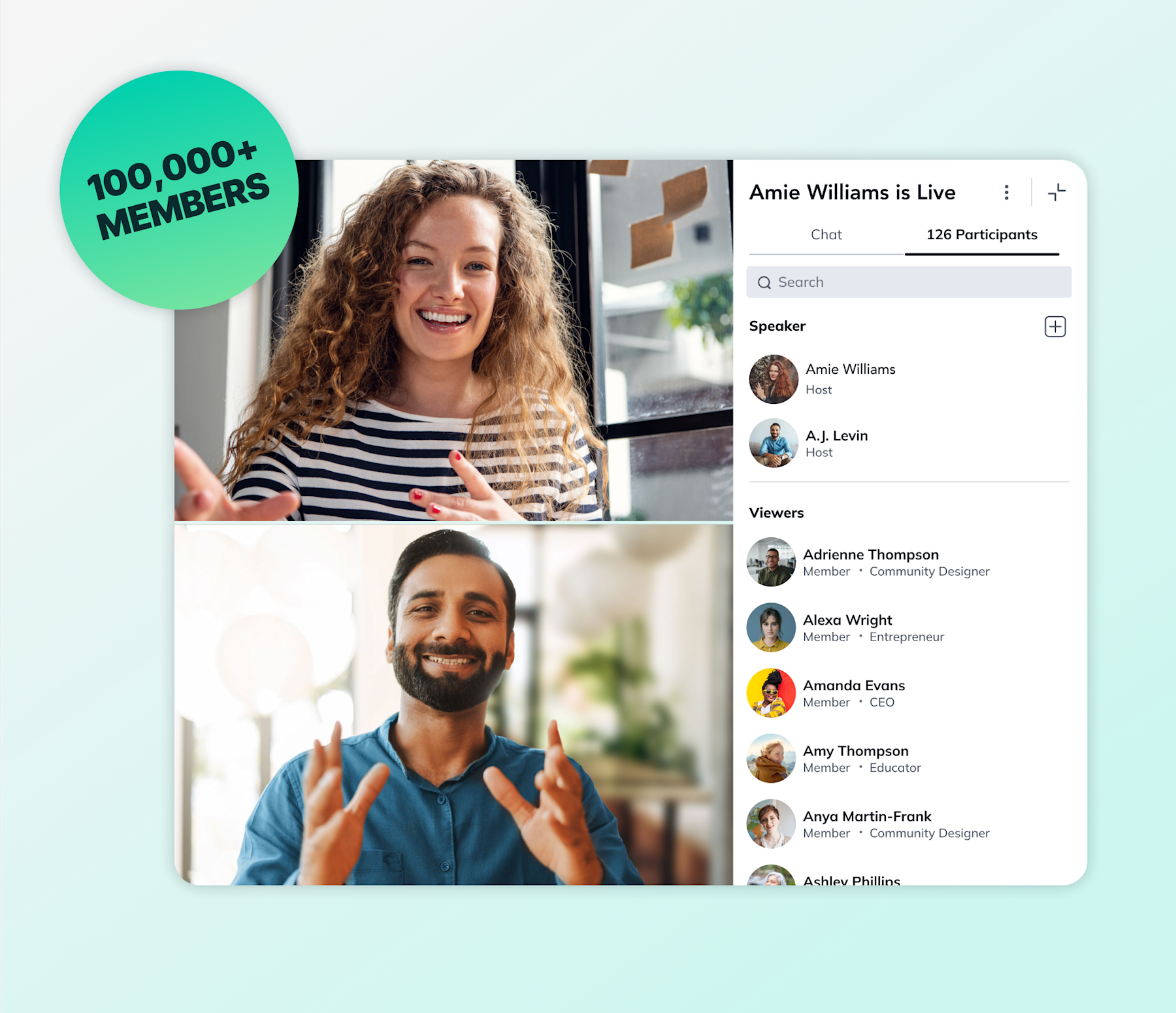
Online Courses
Creating a Course
Teaching a Course
Course Platforms
Selling a Course
Communities & Memberships
Community Platforms
Managing a Community
Building a Community
Growing a Community
Monetizing a Community
Content Creation
Creators & Entrepreneurs
Monetization
Content Creation
Starting a Business
Website Builders
Creating & Managing a Website
Events
Event Platforms
Hosting & Marketing Events
Branded Apps
Creating a Mobile App
Coaching Apps
Community Apps
Coaching
Mastermind Groups
Starting a Coaching Business
Coaching Platforms
Filter by Category
Online Courses
Communities & Memberships
Creators & Entrepreneurs
Events
Branded Apps
Coaching
Build a $1 Million Community
This free masterclass went viral—sign up to learn why.

